Healthcare Background Checks: A Complete Guide to Requirements, Compliance, and Best Practices

Healthcare background checks are structured screening processes designed to verify a candidate’s criminal history, professional credentials, sanctions status, and suitability to work with vulnerable patient populations. These checks exist to protect patient safety, meet regulatory obligations, and reduce organizational risk by ensuring only qualified, vetted individuals provide care. This guide explains what healthcare background checks cover, how they differ from standard employment screenings, and practical steps HR and hiring teams can take to design defensible, efficient programs.
Readers will gain an operational playbook that covers required checks (criminal, OIG/SAM, license verification, drug testing, education and employment verification, identity verification, sex offender checks), technology and integration choices that accelerate hiring, and vendor selection criteria tailored to high-volume or complex healthcare staffing. Practical examples, EAV comparison tables, and checklists are included to help compliance officers and hiring managers apply these recommendations immediately. Throughout this guide, you’ll find clear recommendations for policy design, continuous monitoring, and vendor evaluation to balance speed with patient-safety priorities.
Why Are Healthcare Background Checks Critical for Patient Safety and Compliance?
Healthcare background checks are critical because they directly reduce the probability that individuals with disqualifying histories or revoked credentials will have clinical access to patients. By verifying criminal history, sanctions, and licensure, employers create multiple defensive layers that protect vulnerable patients and limit regulatory exposure. Robust screening also documents due diligence that helps defend against negligent hiring claims and supports audit readiness under healthcare program integrity standards. Let's break down how healthcare screening differs from standard hiring checks and explain concrete compliance steps organizations can adopt to strengthen patient-safety controls.
What Makes Healthcare Background Checks Different from Standard Employment Screenings?
Healthcare background checks go beyond typical pre-employment screenings by adding specialized verifications such as OIG/SAM sanctions, primary-source license validation, and role-based checks tied to clinical scope. These checks query federal exclusion lists, state licensing boards, and local criminal records more extensively because of the higher risk to patient safety and program integrity. Healthcare screenings often include ongoing monitoring and re-verification tied to license renewals and facility privileges, which differs from many standard hiring flows that stop after onboarding. Understanding these differences helps hiring teams design role-mapped screening policies that match clinical responsibility with appropriate verification intensity.
How Do OIG and SAM Exclusion Lists Impact Healthcare Hiring?
OIG and SAM exclusion lists identify individuals barred from participating in federally funded healthcare programs, and employing excluded individuals can lead to substantial financial penalties and program integrity violations. Screening these lists is therefore a regulatory requirement for roles that bill Medicare, Medicaid, or other federal funds and should occur at offer and on a continuous basis thereafter. Operationally, organizations should run both point-in-time checks and continuous monitoring feeds, escalate any potential matches to a compliance reviewer, and document decisions and remediation steps for audits. Regularly verifying exclusion screening workflows reduces legal risk and preserves payer relationships.
What Are the Risks of Negligent Hiring in Healthcare?
Negligent hiring occurs when an employer fails to take reasonable steps to verify qualifications or past misconduct and that failure contributes to patient harm; the legal and financial consequences can be severe. Beyond litigation risk, negligent hiring damages reputation, increases turnover costs, and can trigger regulatory sanctions when care quality lapses are tied to inadequate screening. A mitigation checklist that includes primary-source license checks, criminal searches, sanctions screening, and documented adverse-action procedures reduces exposure. Implementing these checks consistently across hiring pathways demonstrates due diligence and strengthens the defensibility of hiring decisions.
How Do Background Checks Protect Vulnerable Patient Populations?
Background checks protect children, elderly patients, and other vulnerable groups by prioritizing role-based safeguards such as sex offender registry queries, abuse registry checks where applicable, and elevated scrutiny for direct-care roles. For higher-risk positions—such as pediatric nurses, long-term care aides, or behavioral health staff—employers should require more frequent re-verification and tighter credentialing thresholds. Policies should map screening intensity to exposure level, document supervisory controls, and include rapid response procedures when new information emerges. These layered protections both reduce immediate risk and underscore an ethical commitment to patient safety.
What Are the Essential Components of a Comprehensive Healthcare Background Check?
A comprehensive healthcare background check combines multiple search types and verifications to establish a candidate’s suitability for clinical work, and each component targets specific patient-safety or compliance risks. The components below represent the typical set used by hospitals, clinics, and staffing agencies; operational tips focus on batching, parallelization, and documentation to support high-volume hiring. After the table, each subsection explains mechanics, typical data sources, and practical turnaround expectations so teams can design defensible workflows.
How Are Criminal History Checks Conducted for Healthcare Professionals?
Criminal history checks for healthcare roles combine national database searches with county-level fingerprint or records checks to capture relevant convictions that may not appear in centralized sources. The operational reason is that many important criminal records reside at the county level, so an SSAN trace plus county-court queries improves accuracy. FCRA-compliant workflows require candidate disclosure, consent, and an adverse-action process if a screening result influences hiring. Recommended practice is to run parallel searches—national plus targeted county checks—to reduce total turnaround while preserving thoroughness.
What Is Included in OIG and Healthcare Sanctions Monitoring?
Sanctions monitoring covers federal exclusion lists and program integrity data sources—primarily the Office of Inspector General exclusions and the System for Award Management—so employers can prevent participation by barred individuals. Continuous monitoring versus one-time checks is a key operational decision: continuous feeds surface new exclusions after hire, while point-in-time checks only confirm status at onboarding. When a potential match occurs, workflows should include verification, temporary work restrictions if warranted, and documented remediation steps. Integrating sanction alerts into HR dashboards supports fast triage and audit trails.
How Does Professional License Verification Ensure Credential Accuracy?
Professional license verification confirms the existence, active status, and any disciplinary history for clinical credentials through state licensing boards and primary-source verification tools. This reduces the risk of hiring clinicians with expired, suspended, or revoked licenses and supports privileging and billing compliance. For many roles, ongoing license monitoring tied to expiration and disciplinary feeds complements initial verification to catch intervening changes. Practical steps include automating renewal reminders and running automated board checks at defined intervals.
Why Are Drug and Alcohol Screenings Vital in Healthcare Hiring?
Drug and alcohol screenings detect recent substance use that might impair clinical judgment or patient safety; they are commonly used pre-employment, post-incident, and in random testing programs. Testing modalities include urine, hair, and saliva panels, each with different detection windows and privacy considerations, and policy must address consent, confidentiality, and chain-of-custody. Employers should align testing policies with state regulations and collective bargaining agreements, ensuring that procedures are applied consistently and documented. In high-risk clinical settings, integrating automated scheduling and lab order workflows reduces administrative friction and turnaround time (TAT). For more information on this topic, check our legislative shifts in employee screening.
What Role Do Education and Employment Verifications Play in Healthcare?
Education and employment verifications prevent credential fraud by confirming clinical degrees, certifications, and past clinical roles through primary-source checks or direct employer contact. Given documented rates of resume discrepancy in healthcare hiring, validating clinical training and prior clinical experience is essential for patient-safety and credentialing. Verification also supports reimbursement and credentialing processes by ensuring practitioners meet documented qualifications. Standard practice is to prioritize verification for roles that require specific degrees or prior clinical settings and to automate status tracking for outstanding verifications.
How Is Identity Verified in Healthcare Background Checks?
Identity verification links a candidate’s name and personal identifiers to records used across checks—commonly via SSN trace, government ID confirmation, or mobile ID capture—to reduce mismatches and fraud. Mobile-first identity capture reduces candidate friction and transcription errors during intake, improving data quality for downstream county searches and license matching. For high-volume hiring, balancing friction and fraud mitigation means using the least intrusive verification that still provides reliable linkage. Correct identity linkage improves the accuracy and speed of all other checks.
Why Are Sex Offender Registry Checks Important for Healthcare Staff?
Sex offender registry checks identify individuals registered under state or national registries whose presence in patient-care roles may pose safety risks for vulnerable populations. These checks are especially important for staff working with children, behavioral health patients, or residents in long-term care and should be run at onboarding and on a recurring cadence for high-risk roles. Operationally, employers should document role-based policies that specify registries queried, review procedures for potential matches, and maintain auditable decision records. Integrating registry checks with broader safeguarding policies strengthens both prevention and incident response.
The below table summarizes the typical purpose, data sources, and turnaround for each check type so hiring teams can prioritize sequencing and SLAs in their screening workflow.
| Check Type | Purpose / Source | Typical Turnaround |
|---|---|---|
| Criminal history search | Identify convictions and pending charges; county, state, federal records | 1–7 days (varies by county) |
| OIG & SAM sanctions screening | Detect federal exclusions from Medicare/Medicaid programs | Instant to 1 day (real-time feeds available) |
| Professional license verification | Confirm active status, expiration, disciplinary actions via state boards | 1–5 days (primary-source checks) |
| Drug and alcohol screening | Assess impairment risk prior to hire or post-incident | 1–3 days (lab turnaround dependent) |
| Education & employment verification | Validate degrees and prior clinical employment | 3–10 days (depends on institutions) |
| Identity verification (SSN trace) | Confirm identity and support record linkage for county checks | Instant to 1 day |
| Sex offender registry checks | Identify registrants who may pose risk to patients | Instant to 1 day |
How Can Technology Streamline Healthcare Background Check Processes?
Technology reduces administrative friction, shortens time-to-hire, and improves the accuracy of healthcare background checks by automating intake, orchestration, and data exchange with primary sources. Mobile-first intake options lower candidate dropoff and improve data quality, orchestration engines run checks in parallel to shorten turnaround, and ATS/HRIS integrations eliminate duplicate data entry. Monitoring dashboards and automated alerts enable continuous compliance post-hire. The sections below explain the benefits of specific technology features and offer a practical guide to choosing the right pre-employment screening software.
Common platform features can be linked to measurable operational benefits so healthcare hiring teams can prioritize vendor capabilities during selection:
Easy ID capture
Fewer candidate errors and faster completion can lead up to 20% faster intake
Automated orchestration
Parallel checks reduce manual steps delivering 30–50% shorter TAT for multi-check orders
ATS/HRIS connector
Creates single source of truth and audit trails: Less re-keying and faster reporting
What Are the Benefits of a Simple Background Screening Solution?
Simplify candidate intake by enabling ID capture, eConsent, and document upload from smartphones, which increases completion rates and reduces manual correction of typos. This approach improves the candidate experience and shortens the window between offer acceptance and screening initiation, directly reducing time-to-active status. For high-volume healthcare hiring, lower friction translates into higher conversion from offer to placement and fewer delayed starts due to incomplete paperwork. Teams should measure candidate completion rates and time-to-submit as primary metrics when evaluating mobile intake effectiveness.
How Does Automated Background Check Software Improve Hiring Speed?
Automated screening software orchestrates parallel searches, triggers conditional workflows for role-based checks, and issues candidate reminders to close outstanding items, which collectively reduce cycle time. By running compatible checks simultaneously rather than sequentially, vendors can cut total turnaround time substantially for multi-component orders. Automation also frees HR staff from repetitive tasks so they can focus on case review and exception handling, improving throughput without sacrificing compliance. Operational benchmarks should track average TAT per role and percentage of orders completed without manual intervention.
How Do ATS and HRIS Integrations Enhance Healthcare Hiring?
ATS and HRIS integrations create a seamless data flow that removes duplicate manual entry, standardizes status updates, and consolidates audit trails for compliance reporting. Integrations typically use APIs, webhooks, or batch connectors to sync candidate identity, role requirements, check results, and onboarding milestones between systems. For high-volume or multi-facility employers, this reduces human error and enables consistent enforcement of role-based screening rules. Integration maturity is often a key determinant of whether a screening program can scale efficiently without adding headcount.
What Is Continuous Monitoring and Why Is It Essential Post-Hire?
Continuous monitoring is an ongoing service that scans sanctions lists, license statuses, and selected criminal databases to surface material changes after hire, helping organizations act quickly on new risks. This service shifts screening from a one-time gate to an ongoing safety control that protects patients and payer relationships by identifying newly excluded or disciplined practitioners. Best practices include tuning alert thresholds, defining triage steps, and linking alerts to HR case management so resolution is timely and documented. Continuous monitoring reduces long-term legal and operational risk by keeping the workforce aligned with compliance expectations.
How Vetty Stands Out:
After explaining these technological benefits, it is useful to recognize real-world vendor capabilities that map to the features above. Vetty is a hiring acceleration platform that consolidates background checks, health screenings, and document collection into a single dashboard with a mobile-first intake experience and ATS/HRIS integrations. Vetty’s platform capabilities—mobile ID capture, automated orchestration, continuous monitoring, and a consolidated dashboard—illustrate how technology described here translates into faster, more compliant healthcare hiring workflows. For organizations evaluating platforms, asking vendors to demonstrate mobile intake, orchestration logic, integration points, and monitoring feeds during a demo helps validate operational fit.
What Are Best Practices for Healthcare Staffing Background Check Policies?
Best practices combine role-based requirements, clear documentation, consistent adverse-action procedures, and periodic re-screening to ensure policies are defensible and aligned with patient-safety goals. Policies should map screening components to exposure levels, specify lookback periods and permissible findings, and define record retention and audit processes. Training HR and hiring managers on policy rationale and workflows closes the loop between policy and practice. Below are practical steps and checklists to operationalize these practices across healthcare settings.
- Map roles to required checks: Define screening packages by exposure and billing responsibilities.
- Standardize consent and FCRA procedures: Ensure legal compliance and consistent adverse-action workflows.
- Document decision-making: Maintain auditable records for hire denials, remediation, and rehire decisions.
These steps help establish a defensible policy foundation that supports consistent enforcement and audit readiness.
How Do You Craft a Compliant Healthcare Background Check Policy?
Crafting a compliant policy begins with role mapping: identify patient-exposure levels and billing responsibilities to determine required checks. The policy must include FCRA-compliant disclosure and consent language, a transparent adverse-action process, and clear retention rules for screening records. Operationalizing the policy requires SOPs for orders, escalation workflows for potential matches or license issues, and scheduled reviews to account for state-law changes. A periodic compliance review cycle ensures policies remain aligned with regulatory and operational needs.
Why Is Ongoing Monitoring and Re-Screening Important in Healthcare?
Ongoing monitoring and periodic re-screens capture material changes—such as new exclusions, arrest activity, or license discipline—that can occur after hire and materially affect patient safety. Event-based monitoring averted in action reduces the need for frequent full re-screens while keeping visibility on the most consequential data. Recommended cadences vary by role risk level, with higher-risk clinical staff receiving more frequent checks and lower-risk administrative staff on longer intervals. Integrating monitoring alerts into HR case management reduces administrative burden while preserving timely responses.
How Should HR Teams Be Trained for Effective Healthcare Screening?
HR teams need training on FCRA procedures, interpreting sanctions and disciplinary records, handling license issues, and using vendor dashboards for case management. Training should include hands-on sessions with the screening platform, scenario-based exercises for adverse-action decisions, and metrics for evaluating proficiency such as time-to-resolution and compliance rates. A regular refresher cadence ensures teams stay current with regulatory changes and vendor feature updates. Effective training shortens resolution times and improves consistency of hiring decisions.
How to Choose the Right Healthcare Background Check Partner?
Selecting a vendor requires evaluating accuracy, integration capabilities, compliance credentials, reporting, security posture, and operational support—each factor materially affects program defensibility and speed. A structured vendor evaluation rubric and pilot scope help validate real-world performance for clinical roles. The table below helps procurement teams convert vendor capabilities into evaluation questions and criteria to use during demos and RFPs.
| Vendor Capability | Why It Matters in Healthcare | Evaluation Questions |
|---|---|---|
| Data accuracy & primary sources | Ensures reliable decisions and audit defensibility | Do you use county-level searches and primary-source license checks? |
| Integrations (ATS/HRIS) | Reduces manual entry and speeds hiring | What integration methods and connectors do you support? |
| Continuous monitoring | Maintains compliance post-hire | How are alerts delivered and triaged? |
| Certifications & security posture | Demonstrates process and data safeguards | Do you hold industry accreditations and security certifications? |
What Key Factors Should Healthcare Employers Consider When Selecting a Vendor?
Healthcare employers should prioritize vendors that demonstrate accurate primary-source verification, rapid turnaround on critical checks, robust ATS/HRIS integration options, and clear workflows for alerts and adverse action. Service-level agreements for turnaround time, data quality metrics, and support for role-based screening packages are key operational factors. Security posture and data handling practices matter for patient and candidate data protection. A pilot project that mirrors typical hiring volumes and role complexity helps validate claimed performance before enterprise-wide rollout.
How Does Vetty Ensure Compliance with PBSA and SOC2 Type 2 Standards?
PBSA accreditation indicates adherence to professional background screening best practices, and SOC2 Type 2 certification demonstrates operational controls over data security and processing—both are critical assurances for healthcare employers. When evaluating vendor claims, request documentation of accreditations and ask vendors to explain scope, audit cadence, and what controls the certifications cover. These credentials help confirm that vendor processes align with industry standards and that candidate and patient-adjacent data are handled under audited controls.
What Are the Advantages of Vetty’s All-in-One Hiring Acceleration Platform?
Vetty positions itself as a mobile-first, all-in-one hiring acceleration platform that consolidates background checks, health screenings, and document collection in a single dashboard to reduce friction across the offer-to-active lifecycle. The platform’s mobile ID capture and automated orchestration are designed to lower candidate dropoff and speed multi-check workflows, while ATS/HRIS connectors centralize status and reporting. Continuous monitoring and onboarding integration aim to shorten time-to-active status for high-volume hires while preserving compliance controls. For organizations prioritizing speed and audit readiness, these consolidated capabilities can reduce administrative overhead and improve candidate experience.
Ready to See Vetty in Action?
What Are Common Questions About Healthcare Background Checks?
This section answers frequently asked operational questions in concise, authoritative responses to help hiring teams quickly resolve common uncertainties. The short answers focus on practical norms, legal constraints, and recommended practices that are widely used in healthcare screening programs.
How Far Back Do Healthcare Background Checks Go?
Common lookback periods vary: many organizations use a 7-year lookback for certain criminal records, while other records such as convictions or regulatory actions may be searched without a time limit when patient safety or billing integrity is at stake. Legal constraints—such as state laws and FCRA limitations—affect permissible lookback windows, so policy must reflect both state requirements and role risk. Role-based exceptions are common for clinical positions with direct patient contact or billing responsibilities. Employers should document rationale for longer searches and ensure consistent application.
What Disqualifies Candidates from Working in Healthcare?
Disqualifying findings typically include active OIG/SAM exclusions, revoked or suspended licenses for clinical roles, and certain felony convictions that bear directly on patient safety; exact disqualifiers vary by role and employer policy. Policies should be consistently applied, documented, and include an adverse-action process that affords candidates notice and an opportunity to respond. Employers must balance public-safety considerations with rehabilitation and non-discrimination obligations, ensuring decisions are proportionate to job duties. A clear, documented rubric helps defend hiring choices.
How Long Does a Healthcare Background Check Typically Take?
Turnaround times depend on check types: instant or same-day for database sanctions and identity matches, 1–7 days for county criminal searches, 1–5 days for license verification, and 3–10 days for education or employment verifications. Factors that lengthen time include manual county retrievals, international verifications, and incomplete candidate information. To accelerate timelines, use mobile intake, parallel processing, and vendor orchestration that runs compatible checks concurrently. Tracking metrics like median TAT by role helps identify bottlenecks and improvement opportunities.
What Are State-Specific Healthcare Background Check Requirements?
State requirements vary on lookback periods, mandatory registry checks, and whether certain checks must be performed by state agencies, so employers should consult state licensing boards and department of health resources for authoritative rules. Common variance areas include criminal-record expungement rules, mandated fingerprint-based checks, and specific registry queries for abuse or neglect. Employers operating across states should centralize policy to accommodate jurisdictional differences and update procedures when regulations change. Maintaining a state-rule matrix aids consistent compliance.
How Do Healthcare Background Checks Impact Staffing Challenges and Workforce Integrity?
Healthcare background checks influence staffing outcomes by improving hiring quality, protecting patient safety, and reducing costs associated with turnover and remediated hires. Screening helps detect credential discrepancies and resume fraud that could otherwise lead to poor hires and higher replacement costs. The subsections below present relevant statistics, operational linkages to staffing shortages, and how screening investment can be modeled against turnover savings.
What Are the Latest Statistics on Resume Fraud and Credential Discrepancies?
Recent industry analyses indicate substantial rates of resume discrepancies and credential misrepresentation, which translate into tangible operational risk during hiring. High discrepancy rates increase the likelihood of unqualified individuals entering clinical roles and raise the need for rigorous primary-source verification. To mitigate this, employers should prioritize direct verification of clinical education and past clinical employment and track discrepancy rates as a metric for program effectiveness. Reducing hire-related fraud improves clinical quality and reduces remediation costs.
How Do Background Checks Help Address Healthcare Workforce Shortages?
Efficient and accurate screening reduces time-to-hire and helps staffing teams move candidates into patient care faster, which is critical during surge periods and chronic shortages. Faster onboarding via mobile intake, parallel checks, and integrated HR workflows means fewer offers lost to delay and quicker ramp-up of staffing capacity. Continuous monitoring preserves workforce integrity without requiring frequent full re-screens that can create administrative drag. In sum, a streamlined screening program supports both staffing velocity and safety.
What Is the Financial Impact of Nurse Turnover and How Can Screening Help?
Nurse turnover carries significant replacement and productivity costs, and part of that cost is associated with poor hire fit or undisclosed issues that robust screening could have identified. Screening contributes to hire quality by verifying credentials and employment history, which helps reduce early-career mismatches and the downstream expense of replacement. Employers can estimate ROI by comparing screening program costs against avoided turnover cost per nurse and reduced litigation or remediation expenses, using conservative assumptions to build a business case for investment.
For teams ready to evaluate vendor solutions, consider piloting screening packages for a specific clinical role and measuring offer-to-start time, candidate completion rates, and discrepancy detection rates. When vendor pilots demonstrate measurable operational improvements, scale with integrated workflows and training to preserve gains across the organization. If you’d like to see an example of a consolidated, mobile-first hiring acceleration platform that supports these approaches, request a demo from the vendor to observe mobile intake, orchestration, continuous monitoring, and consolidated reporting in action.
Frequently Asked Questions
What are the legal requirements for conducting healthcare background checks?
Legal requirements for healthcare background checks vary by state and can include compliance with the Fair Credit Reporting Act (FCRA), state-specific laws regarding criminal history checks, and mandatory verification of professional licenses. Employers must ensure that their screening processes adhere to these regulations, which may dictate the types of checks performed, lookback periods, and the handling of adverse actions. It's crucial for organizations to stay updated on local laws to maintain compliance and protect patient safety.
How can organizations ensure the accuracy of background check results?
To ensure the accuracy of background check results, organizations should utilize primary-source verification methods, such as contacting state licensing boards and using county-level criminal record searches. Implementing a multi-step verification process that includes cross-referencing data from various sources can also enhance accuracy. Additionally, organizations should regularly audit their background check processes and vendor performance to identify discrepancies and improve the reliability of the information obtained.
What should be included in a healthcare background check policy?
A comprehensive healthcare background check policy should include clear definitions of required checks based on role risk, procedures for obtaining candidate consent, and guidelines for handling adverse actions. It should also outline the lookback periods for different types of checks, specify documentation and record retention requirements, and detail the process for periodic re-screening. Training for HR personnel on the policy's implementation and compliance is essential to ensure consistent application across the organization.
How often should healthcare professionals be re-screened?
The frequency of re-screening healthcare professionals depends on their role and associated risks. Higher-risk positions, such as those involving direct patient care, may require more frequent checks—potentially annually or biannually—while lower-risk roles might be re-screened every few years. Organizations should establish a re-screening schedule based on regulatory requirements, industry best practices, and the specific risks associated with each position to maintain compliance and ensure patient safety.
What are the consequences of failing to conduct proper background checks?
Failing to conduct proper background checks can lead to severe consequences, including legal liability for negligent hiring, which can result in costly lawsuits and damage to the organization's reputation. Additionally, employing individuals with disqualifying histories can compromise patient safety, leading to potential harm to vulnerable populations. Organizations may also face regulatory penalties and loss of accreditation if they do not adhere to mandated screening requirements, further impacting their operational integrity.
How can technology improve the background check process in healthcare?
Technology can significantly enhance the background check process in healthcare by automating data collection, streamlining verification workflows, and integrating with existing HR systems. Mobile-first solutions facilitate candidate engagement and reduce drop-off rates during the screening process. Automated orchestration of checks allows for parallel processing, which shortens turnaround times. Continuous monitoring technologies also help organizations stay compliant by alerting them to any changes in a candidate's status post-hire, ensuring ongoing safety and compliance.
What role does candidate consent play in the background check process?
Candidate consent is a critical component of the background check process, as it ensures compliance with the Fair Credit Reporting Act (FCRA) and other legal requirements. Employers must obtain written consent from candidates before conducting background checks, clearly informing them about the types of checks to be performed and how the information will be used. This transparency helps build trust with candidates and protects organizations from potential legal challenges related to privacy violations or unauthorized screenings.
Conclusion
Implementing comprehensive healthcare background checks is essential for safeguarding patient safety and ensuring compliance with regulatory standards. By verifying credentials, criminal histories, and ongoing monitoring, organizations can significantly reduce the risks associated with negligent hiring. Investing in robust screening processes not only protects vulnerable populations but also enhances the overall integrity of healthcare staffing. To optimize your hiring practices, explore our tailored solutions and elevate your background check protocols today.
Let’s Build Your Hiring Advantage
Want to screen faster, place sooner, and win more? Let’s talk.






